Working on projects vs doing email – which is best done in the morning?
This post was prompted by Paula Harding’s Linked In post where she writes about being a highly effective EA who has her Executive organised to a standard she’d get the Gold medal but when it comes to herself, she feels she wouldn't even make it past the trials.
Paula mentions three things she’s put in place put it to overcome the twin obstacles of procrastination and distraction. She writes;
I have a distraction page on my desk and any random thought that comes into my head gets written down.
I have turned off email notifications.
I work on emails in the morning and projects most of the afternoon. The last hour of the day checking emails and last minute requests.
I agree with Paula in having a distraction page to capture random thoughts - that's an excellent idea. I congratulate Paula on turning off her email notifications and hope that means all of them - the audible and the visual. And then I'd like to suggest that it should be the other way around when it comes to working on emails in the morning and projects in the afternoon - I believe it should be projects and high pay off activities in the morning and leave email until the afternoon.
Let me explain . . .
Most of us have our greatest levels of mental energy and alertness in the morning rather than the afternoon. Some have these very early in the morning, some mid-morning and some late morning. The point is that, for most of us, it's morning rather than the afternoon.
As a result of this, I suggest that we should be doing our project work in the morning and leaving most email processing to the afternoon. Generally speaking, it's easier to talk than it is to think. So it makes sense to do the thinking tasks in the morning (when we have the highest levels of energy) and leave the talking tasks (which are relatively easy) to the afternoon. When you think about it, email is just one of a number of ‘talking’ tasks. Sure, writing emails is a bit more complex than simply talking in a meeting or phone call, but thinking of what to say is not.
I really like the work done by my Thought Leaders colleague, Donna McGeorge, in her book ‘The First 2 Hours’. While the book is entitled ‘The First 2 Hours’, Donna goes through ideal tasks and activities for all the various times of the day. Of course, the focus is on the first two hours because the way we start our day really has a disproportionately strong impact on how productive our overall day is going to be.
Donna talks about only addressing important emails in the first 2 hours and I agree with that. Anything that is both urgent and important needs to be dealt with early on. Once these have been handled, attention should be given to project work – critical thinking, problem-solving, conflict resolution, complex tasks and strategic planning. These are tasks that demand our highest mental faculties and we generally only have these in the morning. Using this mental power for what are relatively low value conversations via email is not the best way to structure own day for maximum productivity and effectiveness.
It’s in the second 2 hours of the day, which is that mid to late morning through to lunchtime, the focus should be on responding to other people’s priorities, including responding to their emails. Although Donna doesn’t mention this in her book, I think it’s very important for EAs to include email response as part of their ‘responding to other people’s priorities’.
The third 2 hours which is that period immediately after lunch is when we should be getting back to routine and mundane low priority emails. And the last two hours of the day is finishing up the inbox and getting it ready for maximum attention the following morning.
I hope this helps make the decision between two conflicting demands. Wherever a choice arises, choose to do the thinking oriented task in the morning and push the talking oriented task to the afternoon. I realise this is counter-intuitive and may also mean breaking some old habits but we often have to swim against the tide (of our habits and others’ expectations) to achieve a breakthrough.
I’d welcome any comment or questions – fire away!

